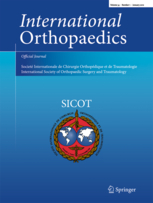
Shoulder & Elbow
Mini-invasive intramedullary pin vs. locking compression plate for midshaft clavicle fractures
Int Orthop. 2017 Jan;41(1):173-1775 patients with Robinson type 2B1-2 displaced midshaft clavicle fractures were included in this trial to compare outcomes using a minimally invasive intramedullary nail technique or a standard locking compression plate. Patients were evaluated over a minimum 12-month follow-up period and outcomes included operative time, fluoroscopy time, length of surgical incision, amount of clavicle shortening, length of hospital stay, time to union, disability, function, and cosmetic dissatisfaction. There were no differences in operative time, length of stay, or clavicle shortening between the two groups, however, fluoroscopy time was significantly longer in the intramedullary nail group. Constant scores were similar between groups but Quick DASH was significantly better in the intramedullary nail group, however, this difference did not appear to be clinically relevant. Time to union was significantly shorter and cosmetic dissatisfaction was significantly lower in the intramedullary nail group.
Unlock the full article
Get unlimited access to OrthoEvidence with a free trial
Start TrialCritical appraisals of the latest, high-impact randomized controlled trials and systematic reviews in orthopaedics
Access to OrthoEvidence podcast content, including collaborations with the Journal of Bone and Joint Surgery, interviews with internationally recognized surgeons, and roundtable discussions on orthopaedic news and topics
Subscription to The Pulse, a twice-weekly evidence-based newsletter designed to help you make better clinical decisions
Exclusive access to original content articles, including in-house systematic reviews, and articles on health research methods and hot orthopaedic topics
Or continue reading this full article
Register Now

Subscribe to "The Pulse"
Evidence-Based Orthopaedics direct to your inbox.




































